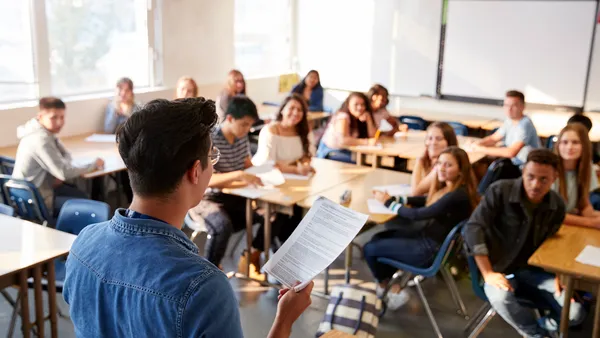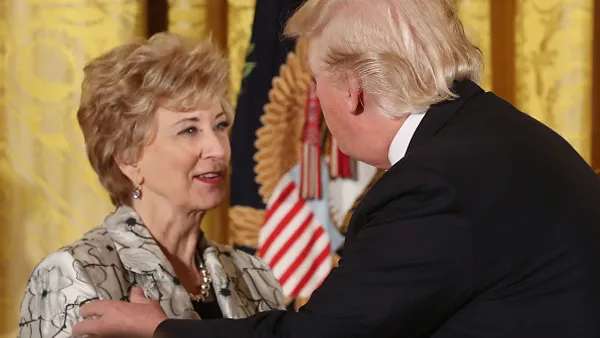Beth Lehr is an assistant principal at Sahuarita High School in Arizona, the 2020 Arizona Assistant Principal of the Year, and the National Association of Secondary School Principals Arizona State Coordinator. April 4-8 is National Assistant Principals Week, during which the National Association of Secondary School Principals, the National Association of Elementary School Principals, and the American Federation of School Administrators honor assistant principals' contributions to student success.
The pandemic may be coming to an end, but the work of helping students recover from its effects has only just begun. Our students experienced trauma and personal challenges the likes of which we’ve never seen, and they need sustained support from mental health professionals to help them become happy, healthy and productive adults.
That’s exactly why 350 of my fellow school leaders and I took to Capitol Hill the day after President Biden’s State of the Union Address. Student mental health is among our most immediate concerns, transcending differences in backgrounds and beliefs. No wonder it was front and center in a December survey released by the National Association of Secondary School Principals, which found student wellness is a concern this year for 9 out of 10 principals, with 49% reporting they are “extremely concerned.”
Student mental health has been an issue for years, and the pandemic has taxed an already overburdened system. Yet, there are representatives in Congress who are either unaware of the crisis or view it as a minor blip that doesn’t warrant continuous resources.
Higher poverty creates higher stress, and the trauma this causes has been a significant barrier to giving our students an excellent education. It’s hard to feed a kid’s brain when their belly is grumbling. The parents of many of our students must work two or three jobs to provide for their families, which leaves little time for them to provide the emotional support that students need before they can truly engage with something like algebra. So, educators end up filling in the gaps for parents and guardians.
That’s why schools need trained mental health providers who have the knowledge and expertise to build trusting relationships with vulnerable students, like Julian.
Julian came to my school with an undiagnosed learning disorder and unaddressed trauma from the death of a parent and housing instability. We started providing needed supports that helped him pass his classes, but when the pandemic hit, he became one of the students who fell off the radar.
Julian lived 25 miles from our school. His family did not have access to reliable transportation, and there are no public transportation opportunities in our area. His family was unable to afford to maintain internet or phone service. He rarely attended virtual classes and was in an environment where there was easy access to drugs and alcohol.
It took many phone calls and home visits to set him up with the technology, academic and social-emotional support he needed to rejoin our learning community. And while my amazing teachers and I have helped Julian get back on track to graduate, his success is fragile. Julian’s past experiences, and the continued struggles with lack of access to services, threaten to knock him off course at any time.
In a school system with chronically inadequate funding for mental health resources, especially for the rural poor, Julian is what counts as a success story. I’m devastated to think of all the kids we simply don’t have the capacity to reach in this way. The harsh truth is that most schools struggle to give their students the attention they deserve.
The NASSP survey I mentioned found only 21% of principals “strongly agree” that there are adequate student services personnel (such as nurses, counselors and social workers) to support students’ well-being in their schools. I envy those who have adequate — let alone any — such personnel in their building. Our student to counselor ratio is approximately 600-to-1, far greater than the nationally recommended ratio of one counselor for every 250 students.
It doesn’t have to be this way. Our leaders can ensure every student has at least one adult they trust at school to help them with their personal challenges so teachers can focus on what they do best: teaching young people.
My colleagues and I have identified a raft of legislative initiatives that would fund the hiring of mental health professionals in our schools. We flew to Washington to fight for their passage, because right now we have not just an opportunity but an obligation to give our children the chance to thrive. Please tell your representatives to pass them on behalf of yours, too.












